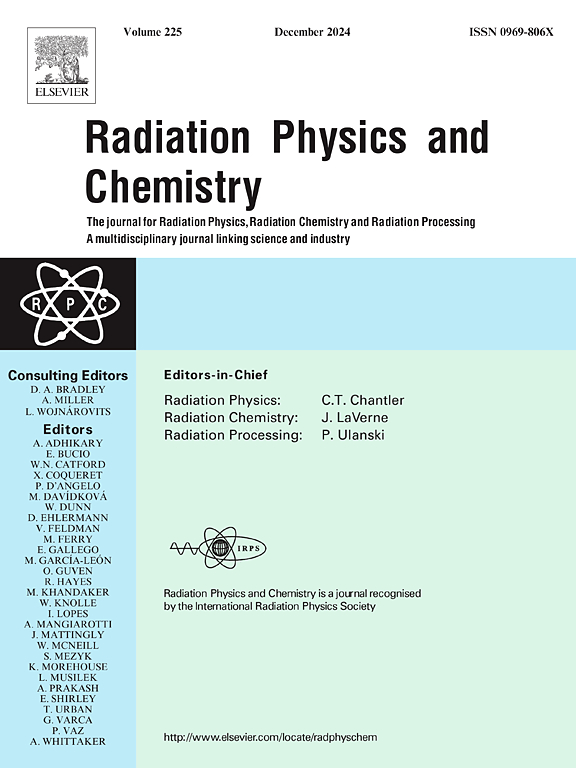固态燃烧法制备Mn和Fe共掺无铅BCT钙钛矿陶瓷的多功能性能
IF 2.8
3区 物理与天体物理
Q3 CHEMISTRY, PHYSICAL
引用次数: 0
摘要
提高多铁无铅陶瓷性能的需求日益增长。良好的铁电性能和磁性能是实现高磁电耦合的关键参数。本文将Mn和Fe共掺杂到无铅的Ba0.96Ca0.04Ti(1-x)(Mn0.5Fe0.5)xO3 (BCT-xMF)陶瓷中,并采用固态燃烧技术合成了0≤x≤0.030 mol%的陶瓷。x射线衍射(XRD)分析和Rietveld精化证实了在所有成分中形成了一个四方相和立方相共存的纯相。随着Mn/Fe含量的增加,四方相的比例减少,而立方相的比例增加,这与拉曼光谱结果一致。Mn/Fe含量的增加导致氧空位和氧缺陷增多,平均晶粒尺寸减小。对介电常数的分析表明,居里温度从116°C降低到67°C,对应于四方相到立方相的转变。当x = 0.015时,陶瓷在居里温度下的介电常数(εc)、饱和极化(Ps)、剩余极化(Pr)、饱和磁化强度(Ms)和剩余磁化强度(Mr)分别为4583、14.09 μC/cm2、9.31 μC/cm2、0.0127 emu/g和0.006 emu/g。这些结果表明,Fe/Mn共掺杂在BCT陶瓷中增强了铁电和铁磁性能,在室温下产生了高磁电系数(αME ~ 1.27 mV/cm Oe),使这些陶瓷成为多铁性应用的候选材料。本文章由计算机程序翻译,如有差异,请以英文原文为准。
Multifunctional properties of Mn and Fe co-doped lead-free BCT perovskite ceramics synthesized via solid-state combustion
There is a growing demand to improve the performance of multiferroic lead-free ceramics. Good ferroelectric and magnetic properties are key parameters for achieving high magnetoelectric coupling (ME). In this work, Mn and Fe were co-doped into lead-free Ba0.96Ca0.04Ti(1-x)(Mn0.5Fe0.5)xO3 (BCT-xMF) ceramics with 0 ≤ x ≤ 0.030 mol%, synthesized by the solid-state combustion technique. X-ray diffraction (XRD) analysis and Rietveld refinement confirmed the formation of a pure phase with coexisting tetragonal and cubic phases in all compositions. As the Mn/Fe content increased, the percentage of the tetragonal phase decreased while the cubic phase increased, consistent with Raman spectroscopy results. Increasing Mn/Fe content also led to more oxygen vacancies and defects, and a decrease in average grain size. Analysis of the temperature-dependent dielectric constant revealed a reduction in the Curie temperature from 116 to 67 °C, corresponding to the tetragonal-to-cubic phase transformation. The ceramic with x = 0.015 showed the highest dielectric constant at the Curie temperature (εc), maximum saturated polarization (Ps), remnant polarization (Pr), saturation magnetization (Ms), and remnant magnetization (Mr), with values of 4583, 14.09 μC/cm2, 9.31 μC/cm2, 0.0127 emu/g, and 0.006 emu/g, respectively. These results indicate that Fe/Mn co-doping into BCT ceramics enhanced both ferroelectric and ferromagnetic properties, resulting in a high magnetoelectric coefficient (αME∼1.27 mV/cm Oe) at room temperature, making these ceramics candidates for multiferroic applications.
求助全文
通过发布文献求助,成功后即可免费获取论文全文。
去求助
来源期刊

Radiation Physics and Chemistry
化学-核科学技术
CiteScore
5.60
自引率
17.20%
发文量
574
审稿时长
12 weeks
期刊介绍:
Radiation Physics and Chemistry is a multidisciplinary journal that provides a medium for publication of substantial and original papers, reviews, and short communications which focus on research and developments involving ionizing radiation in radiation physics, radiation chemistry and radiation processing.
The journal aims to publish papers with significance to an international audience, containing substantial novelty and scientific impact. The Editors reserve the rights to reject, with or without external review, papers that do not meet these criteria. This could include papers that are very similar to previous publications, only with changed target substrates, employed materials, analyzed sites and experimental methods, report results without presenting new insights and/or hypothesis testing, or do not focus on the radiation effects.
 求助内容:
求助内容: 应助结果提醒方式:
应助结果提醒方式:


